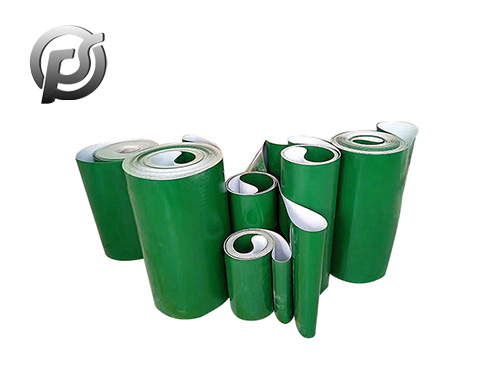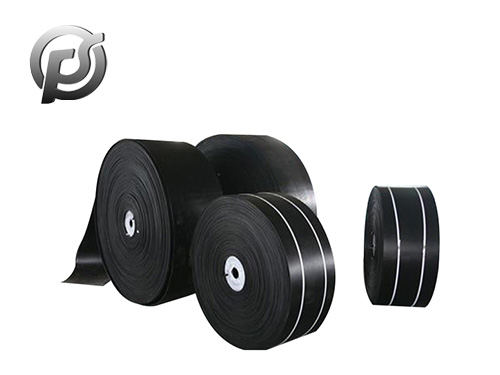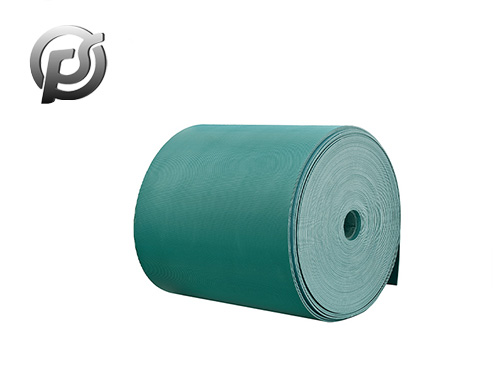1. The rubber
conveyor belt will become longer after a period of use
The conveyor belt will extend in the use process, one part is elastic elongation, can be restored after the external force is removed, the other part is the shrinkage of the skeleton material elongation, this part is unable to recover. In common fabric core conveyor belt, EP conveyor belt has a relatively small extension, while NN conveyor belt has a relatively large extension. Moreover, in the process of use, NN conveyor belt has a larger elongation ratio due to the larger creep of nylon fiber under stress. Moreover, due to the creep of fiber, the amount that can be shrunk back after the withdrawal of external force is much smaller than the elongation.
2, conveyor belt deviation
The main reasons for the conveyor belt body deviation are as follows:
① The uneven tension in the weaving process causes one side loose and the other tight.
② The thickness of both sides is not equal to one side is thick and the other is thin.
③ The tension of flame retardant belt in the production process is not uniform.
3, the correct use of conveyor belt:
① Prevent the conveyor belt from starting under load.
(2) Conveyor belt deviation, should take timely measures to correct.
(3) Conveyor belts of different types and specifications should not be connected together, and their joints are bonded.
(4) The types, structures, specifications and layers of ordinary conveyor belts and special conveyor belts should be selected reasonably according to the use conditions.
⑤ The running speed of the conveyor belt should not be greater than 2.5m/s. Low speed should be used as far as possible for materials with large lumpiness and wear and discharge devices with fixed pears.
⑥ The relationship between the diameter of the driving drum of the roller conveyor and the distribution layer of the conveyor belt, the matching of the driving drum, the reversing drum and the requirements of the groove Angle of the roller should be selected reasonably according to the design regulations of the conveyor.
⑦ Feeding direction should be along the conveyor belt running direction, in order to reduce the material falling on the conveyor belt impact should be adopted chute, reduce the material drop distance; In the receiving section of the conveyor belt, the distance between idlers should be shortened and the buffer idlers should be used as leakage materials. The conveyor belt should comply with the soft and moderate baffle plate, so as to avoid the baffle plate being too hard and scraping the surface of the conveyor belt.
⑧ conveyor in use, if there is a lack of roller, should be timely added and repaired; The roller is covered by materials, resulting in poor rotation, to prevent the leakage of materials stuck between the roller and the belt, pay attention to the lubrication of the moving part of the conveyor belt, but not oil conveyor belt.
⑨ Prevent conveyor belt from being blocked by frame, pillar or block materials, prevent breakage and tearing, and timely repair with rayon cotton when partial damage is found to prevent expansion of conveyor belt.
 Optimizing Operations with PE Conveyor Belts: Durability, Efficiency, and Versatility
Optimizing Operations with PE Conveyor Belts: Durability, Efficiency, and Versatility
 Exploring the Efficiency and Versatility of Light Conveyor Belts
Exploring the Efficiency and Versatility of Light Conveyor Belts
 Polyester Conveyor Belts: Enhancing Efficiency and Reliability in Material Handling
Polyester Conveyor Belts: Enhancing Efficiency and Reliability in Material Handling